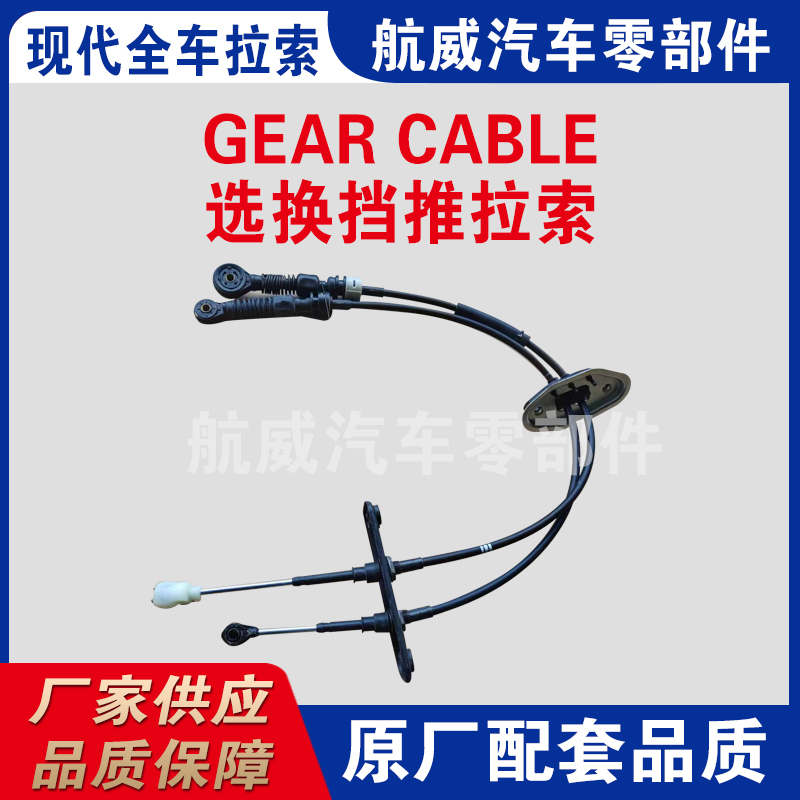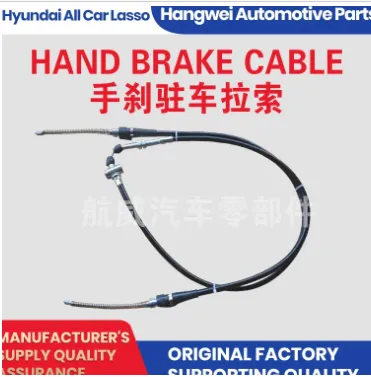Mar . 06, 2025 16:05
Back to list
Shift Selector Cable
Hand throttles, often overlooked in favor of more modern advancements, hold a unique and indispensable position in various transportation and machinery sectors. These devices, which allow operators to manually control engine speed, find application in motorcycles, tractors, boats, and even some industrial machinery. Their contribution to improving efficiency and user control cannot be understated, making them an essential tool for professionals and enthusiasts alike.
The authoritative nature of hand throttles is evident in sectors where reliability and control are paramount. On construction sites, for example, heavy machinery operators depend on hand throttles for stabilizing engine speeds during lifting operations or precise maneuvers in confined spaces. This makes hand throttles an invaluable component of safe and efficient construction practices. Similarly, in emergency vehicles such as fire trucks or ambulances, the ability to control engine speed directly can contribute to more reliable and responsive vehicle performance when lives are at stake. Trustworthiness in hand throttles is built over decades of proven reliability and functionality across various industries. Their mechanical simplicity stands as a testament to their durability—they have few parts that can fail, are easier to maintain, and ensure a consistent level of performance. Users can trust that hand throttles will perform effectively in diverse conditions, from extreme weather to high-pressure situations, where dependable equipment is not just a preference but a necessity. Moreover, the introduction of electronic hand throttle systems has modernized their application, combining the tactile reliability of manual controls with the precision of digital technology. These advanced systems offer features such as cruise control in agricultural machinery and adaptive speed controls in boats, further enhancing the versatility and reliability of hand throttles. In conclusion, despite the technological advancements in automated control systems, hand throttles remain a critical component in many sectors for their ability to provide direct, nuanced control over engine speed. Their role in improving operational efficiency, precision, and safety underlines their continued relevance in modern machinery. As industries evolve, the integration of advanced technologies with traditional concepts like hand throttles offers a blend of innovation and proven functionality, ensuring that users always have the best tools at their disposal.


The authoritative nature of hand throttles is evident in sectors where reliability and control are paramount. On construction sites, for example, heavy machinery operators depend on hand throttles for stabilizing engine speeds during lifting operations or precise maneuvers in confined spaces. This makes hand throttles an invaluable component of safe and efficient construction practices. Similarly, in emergency vehicles such as fire trucks or ambulances, the ability to control engine speed directly can contribute to more reliable and responsive vehicle performance when lives are at stake. Trustworthiness in hand throttles is built over decades of proven reliability and functionality across various industries. Their mechanical simplicity stands as a testament to their durability—they have few parts that can fail, are easier to maintain, and ensure a consistent level of performance. Users can trust that hand throttles will perform effectively in diverse conditions, from extreme weather to high-pressure situations, where dependable equipment is not just a preference but a necessity. Moreover, the introduction of electronic hand throttle systems has modernized their application, combining the tactile reliability of manual controls with the precision of digital technology. These advanced systems offer features such as cruise control in agricultural machinery and adaptive speed controls in boats, further enhancing the versatility and reliability of hand throttles. In conclusion, despite the technological advancements in automated control systems, hand throttles remain a critical component in many sectors for their ability to provide direct, nuanced control over engine speed. Their role in improving operational efficiency, precision, and safety underlines their continued relevance in modern machinery. As industries evolve, the integration of advanced technologies with traditional concepts like hand throttles offers a blend of innovation and proven functionality, ensuring that users always have the best tools at their disposal.
Next:
Latest news
-
Upgrade Your Clutch System with Premium Hydraulic Clutch LinesNewsJul.31,2025
-
Unlock the Power of Precision with Our Throttle CablesNewsJul.31,2025
-
Unleash Power and Precision with Our Accelerator CablesNewsJul.31,2025
-
Experience Unmatched Safety with Premium Handbrake CablesNewsJul.31,2025
-
Enhance Your Vehicle's Performance with Quality Gear CablesNewsJul.31,2025
-
Workings of Clutch Pipe and Hose SystemsNewsJun.04,2025
